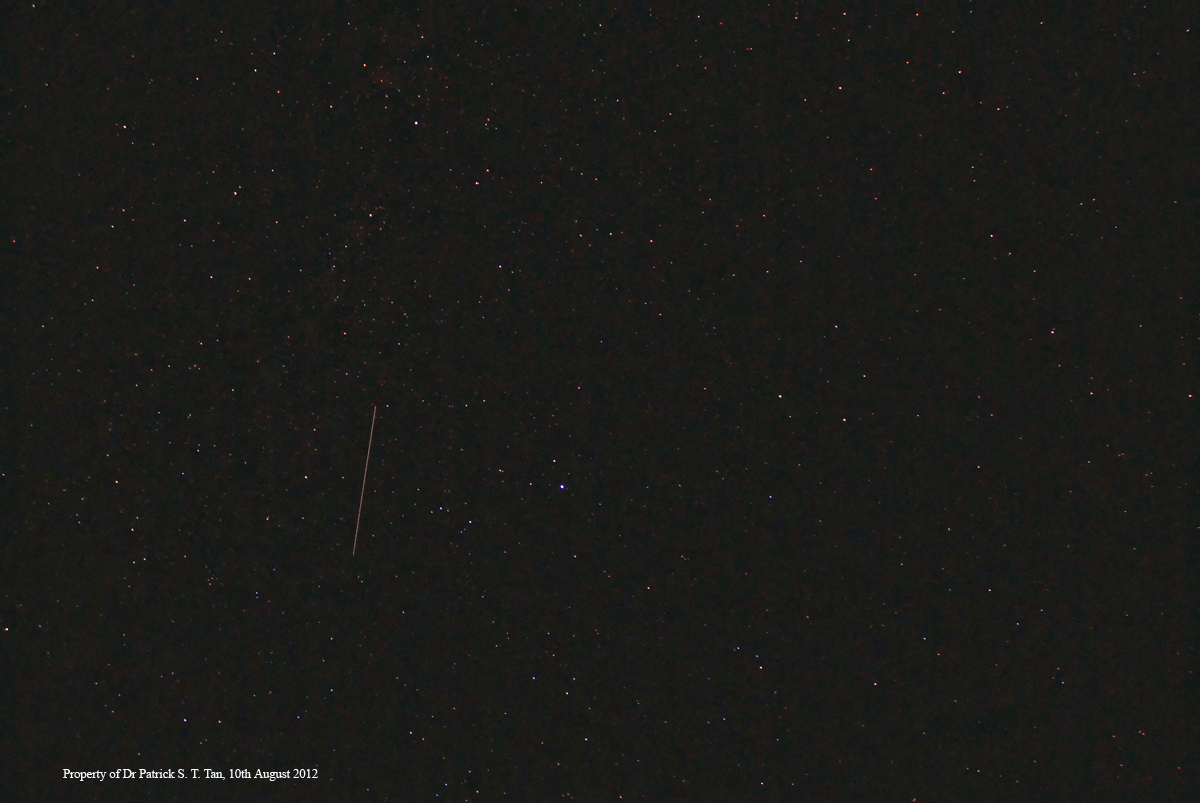
Perseid meteor shower - August 2012
A late rising last quarter moon and a clear night should have made for easy viewing of the Perseid meteor shower this year, combined with the fact that the peak coincided with Friday, Saturday and Sunday night. With the weather forecasting cloud from Saturday evening onwards for the weekend, I opted to try my luck at the beginning of the annual peak. The Perseids consist of the particle trail left behind by Comet Swift-Tuttle as the earth passes through the densest section of cometary debris. The comet has a 130 year periodic orbit and the Perseid meteor shower has been observed for at least 2000 years of man's history. The 'shooting stars' of this particular shower are also known as 'the tears of St. Lawrence' as it's peak always occurs around the 10th of August - the Feast of St. Lawrence.
This year in Sunningwell, the night of the 10th and small hours of the 11th of August had poor seeing and poor transparency as there was a persistent south-westerly wind and the atmosphere was thick with dust and pollution. I was with Bob Evans, the leader of our village conservation group, and between us, we only saw about 5 meteors between 11.30pm and 12.30am. As a good example of light-pollution from nearby Oxford - see the north facing final photo on this webpage. The photographs themselves were taken with my Nikon D80 and a regular Nikkor 18-50mm lens left of course at 18mm setting to get as wide a field of view as possible. Aperture was as low as the lens would go at f3.5 and the ISO setting was 1600. 95 exposures of 20 seconds each were taken in different parts of the sky - and only 2 had light trails bright enough to make them interesting. Coincidentally, both of them were in the constellation Cygus, directly overhead. Roll your mouse arrow over the pictures to see constellations nearest to the meteor.
Roll your mouse over the picture to see constellations
This is a view of the north from the barn on the hill to the south of the village to illustrate the light pollution from Oxford. This is what the pictures taken look like (after a 20 second exposure) before I have filtered out the orange light pollution glow as I have done so in the photographs above. There is an equal glow to the south from Abingdon and the south-west, from Dalton Barracks who keep their sodium lights on all night. The top of Boar's Hill can be seen with the stars of the Plough (Ursa major) above. Roll your mouse over the picture to see the shape of the constellation.
10th August 2012
HOME PICTURES: Solar system PICTURES: Wide field